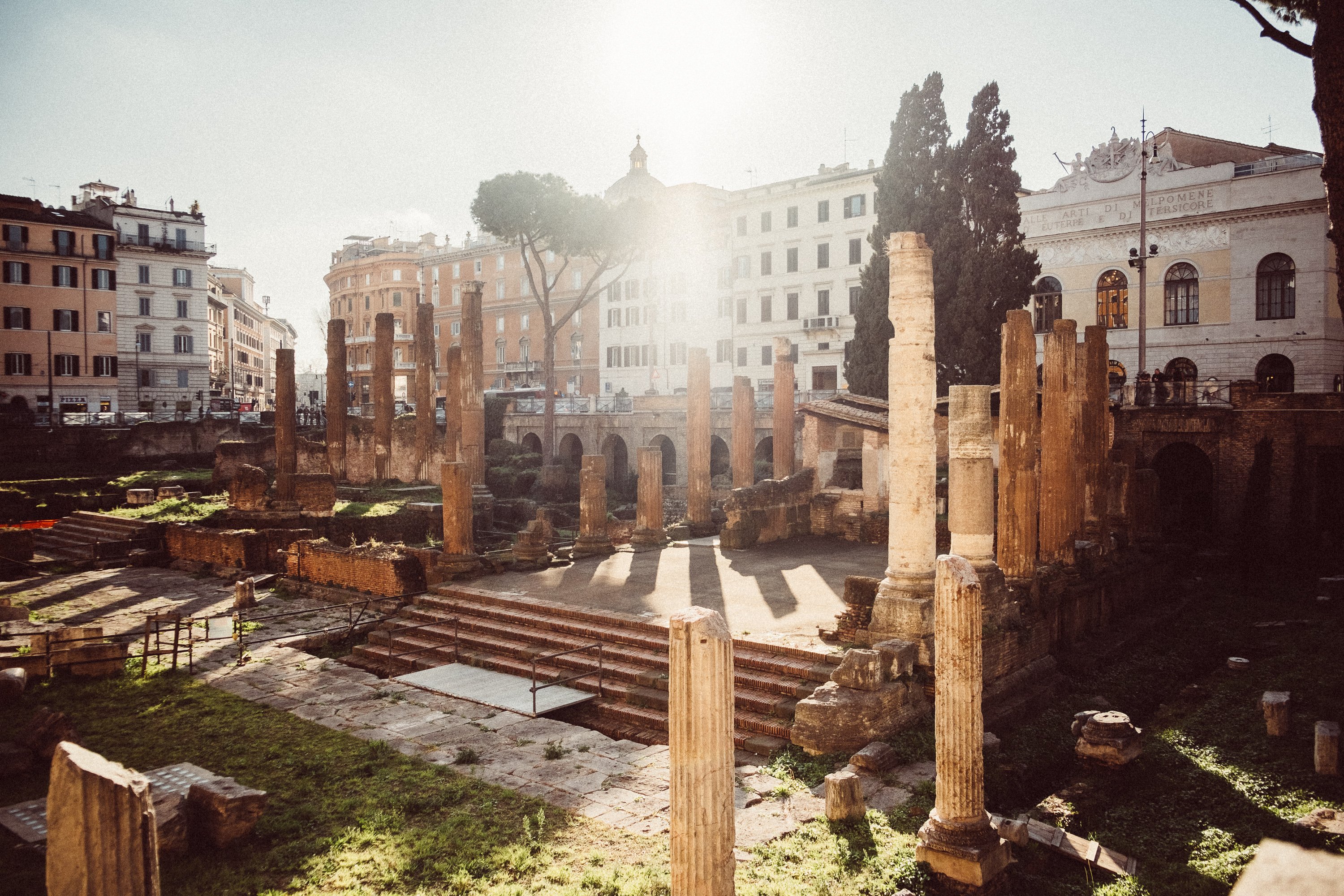
Since its beginnings as a modest family business ca. 1884, when silversmith Sotirio Bulgari first set up shop in Rome, Bulgari—the Italian jewelry, watches, and luxury goods company—has come a long way. But it has never lost sight of its roots.
“Rome is Bulgari’s home and its first source of inspiration,” said CEO Jean-Christophe Babin. When he came to helm the maison in 2013, Babin intrinsically understood that there is no Bulgari without the Eternal City. The aura of superior craftsmanship that so deeply resonates across Roman art and architecture is foundational to the brand, which has itself become a symbol of Italian excellence.
The Divas’ Dream High Jewelry necklace from Bulgari’s Magnifica collection takes after the mosaics of Rome’s ca.-206 Baths of Caracalla. Courtesy of Bulgari.
“The beauty of Rome is an immense heritage, and we are proud to be inspired by a city that has influenced the aesthetic sense of the entire world,” Babin said. “The design of Bulgari creations has changed and evolved thanks to Rome—through its architecture and also its colors, from sunsets to the reflection of light on the buildings and the bridges over the Tiber river.”
One can clearly see how the ancient Colosseum has informed the B.Zero1 jewelry collection, between its cylindrical shapes and gold studs. Meanwhile, the colorful Divas’ Dream collection, with its fan-shaped motif, takes after the mosaics of the ca.-206 Baths of Caracalla—which, incidentally, have come back to life thanks to restoration work that was financed by Bulgari.
The mosaic-tile floors of Rome’s ca.-206 Baths of Caracalla, which Bulgari helped restore. Courtesy of Bulgari.
For the house’s latest High Jewelry collection, Magnifica, creative director Lucia Silvestri has continued to explore the historic art and architecture of her hometown. “Rome will always surprise you,” she said. “This is magic for me. After many years, I still keep finding inspiration.”
Bold yet timeless, each of Magnifica’s 350 designs references a different aspect of Rome while featuring rare gemstones from as far as Colombia and Madagascar. To wit: With 121 buff-top sapphires, 65 round brilliant-cut and pave-set diamonds, and 26 rubellite beads set around a 13.55-ct. Sri Lankan sapphire, the Celestial Sky necklace was informed by the Baroque dome of the Sant’Andrea della Valle church.
Magnifica’s Celestial Sky necklace, inspired by the Baroque dome of the Sant’Andrea della Valle church. Courtesy of Bulgari.
According to Silvestri, Magnifica is the most precious jewelry collection that Bulgari has ever produced, the result of hundreds of millions of euros as well as hundreds of thousands of hours of craftsmanship. It carries on the maison’s history of merging innovation and traditional craft, which could not be achieved without the dedication of its master artisans; their skills have been passed down across generations, elevating jewelry design to an art form. “Magnifica is an ode to the magnificence of its muses, but also to the incredible craftsmanship of our artisans working from the Bulgari High Jewelry laboratory in Rome,” Silvestri said.
These days, Bulgari’s influence extends far beyond accessories—also core to its mission is preserving Rome itself. As CEO, Babin has taken up this call in various ways. “Rome, like few other cities in the world, has an immense treasure to keep,” he said. “It is a great honor to contribute to financing intelligent hands who know how to bring its hidden wonders to light.”
Over the years, the brand has committed itself to a range of ambitious restoration projects all across the capital. In 2014, for example, Bulgari honored its 130th anniversary by aiding in the restoration of the city’s iconic Spanish Steps, which serve to connect Bulgari’s three original stores—the first of which Sotirio opened himself ca. 1884.
The jeweler facilitated the restoration of the Spanish Steps, which connect its first three stores. Courtesy of Bulgari.
More recently, Bulgari lent substantial funding to the Fondazione Torlonia—which houses one of the world’s most significant private collections of ancient art—helping restore nearly 100 of its 620 Greek and Roman statues to their original grandeur. The collection has been put on public view for the first time since its 19th-century foundation, in a setting designed by David Chipperfield Architects at the Capitoline Museum’s Villa Caffarelli.
And next year, the brand will celebrate the conclusion of its work on the Area Sacra di Largo Argentina archeological site. With its four Republican-era temples and the Curia of Pompey—where Julius Caesar was assassinated on the Ides of March in 44 BC—the square has been visible from afar for many years, but never before has it been accessible to the public. For the very first time, visitors will be able to enjoy the area day and night through a system of walkways, which will be illuminated via LED lights after dark. The eastern portico will feature a covered exhibition area displaying artifacts found during the preservation work.
“Bulgari’s eternal devotion for Rome has always aimed to preserve, restore, and enhance the cultural heritage of the city for the benefit of generations to come,” Babin said. And looking ahead, in collaboration with Rome’s Maxxi Museum of contemporary art, the brand has been supporting young artists through the Maxxi Bvlgari Prize. “The third edition is about to start and I am very excited to discover the new works,” Babin said. “We care not only about the art of the past, but also of the future.”